
Sacromonte: The Heartbeat of Flamenco in Granada
Discover Sacromonte in Granada - A neighborhood where flamenco, history, and breathtaking views converge in a unique cultural tapestry.
Nestled on the hills overlooking the Alhambra, Sacromonte is a neighborhood rich in history and culture. Known for its iconic cave dwellings, this area offers a unique glimpse into the traditional way of life that has been preserved over centuries. The whitewashed caves, carved into the hillside, are not just homes but also vibrant venues for flamenco shows, where the passionate rhythms and soulful melodies of this Spanish art form come alive. Sacromonte's narrow cobblestone streets and winding alleys invite exploration. As you wander through the neighborhood, you'll encounter stunning vistas of the Alhambra and the city below. The Mirador de San Nicolás is a must-visit spot for panoramic views that capture the essence of Granada's beauty. The area is also home to the Sacromonte Abbey, a historical site offering a deeper understanding of the neighborhood's religious and cultural significance. In addition to its cultural offerings, Sacromonte is a haven for food enthusiasts. Local eateries serve up traditional Andalusian dishes, allowing visitors to savor the flavors of the region. The neighborhood's bohemian atmosphere, combined with its rich history and vibrant cultural scene, makes Sacromonte an unforgettable destination for tourists seeking an authentic Granada experience.
Local tips in Sacromonte
- Wear comfortable shoes; the cobblestone streets can be steep and uneven.
- Visit in the evening for the best flamenco shows and to see the Alhambra illuminated.
- Bring a camera to capture the stunning views from Mirador de San Nicolás.
- Try the local tapas in one of the neighborhood's traditional bars.
- Be mindful of the weather; it can get hot in summer and chilly in winter.
Sacromonte: The Heartbeat of Flamenco in Granada
Nestled on the hills overlooking the Alhambra, Sacromonte is a neighborhood rich in history and culture. Known for its iconic cave dwellings, this area offers a unique glimpse into the traditional way of life that has been preserved over centuries. The whitewashed caves, carved into the hillside, are not just homes but also vibrant venues for flamenco shows, where the passionate rhythms and soulful melodies of this Spanish art form come alive. Sacromonte's narrow cobblestone streets and winding alleys invite exploration. As you wander through the neighborhood, you'll encounter stunning vistas of the Alhambra and the city below. The Mirador de San Nicolás is a must-visit spot for panoramic views that capture the essence of Granada's beauty. The area is also home to the Sacromonte Abbey, a historical site offering a deeper understanding of the neighborhood's religious and cultural significance. In addition to its cultural offerings, Sacromonte is a haven for food enthusiasts. Local eateries serve up traditional Andalusian dishes, allowing visitors to savor the flavors of the region. The neighborhood's bohemian atmosphere, combined with its rich history and vibrant cultural scene, makes Sacromonte an unforgettable destination for tourists seeking an authentic Granada experience.
Iconic landmarks you can’t miss
Abadía del Sacromonte
Discover the Abbey of Sacromonte, a historic site in Granada offering stunning views, rich culture, and a unique glimpse into the region's spiritual heritage.

CUEVA LA ROCIO flamenco Granada - Espectáculo y Restaurante
Experience the passion of flamenco and savor authentic Andalusian cuisine at Cueva La Rocio in the heart of Granada.

Museo Cuevas del Sacromonte. Centro de Interpretación del Valle del Darro.
Explore the fascinating history and unique cave dwellings of Sacromonte at the Museo Cuevas del Sacromonte in Granada, an unforgettable cultural experience.

Mirador de la Vereda de Enmedio
Experience breathtaking views of Alhambra and Granada at the Mirador de la Vereda de Enmedio, a top scenic spot in the historic Albaicín district.
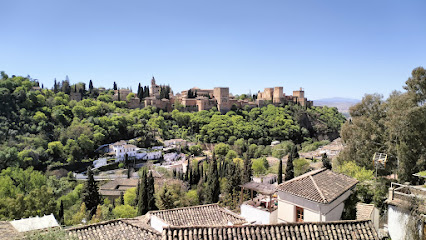
Carmen de la Victoria
Discover the enchanting gardens and historical charm of Carmen de la Victoria, a serene oasis with stunning views in Granada's Albaicín district.

Cuevas Los Tarantos
Discover the rhythms of flamenco in the enchanting caves of Cuevas Los Tarantos, a cultural gem in Granada's Albaicín district.
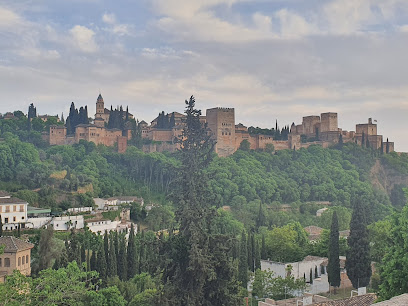
Cuevas de Sacromonte
Explore the historic cave dwellings of Cuevas de Sacromonte in Granada, a vibrant cultural hub for flamenco and authentic Andalusian cuisine.

Cueva Zincalé
Experience the soul of Granada at Cueva Zincalé, where Flamenco performances and authentic Andalusian cuisine create unforgettable memories.

Sacromonte
Discover the cultural heart of Granada in Sacromonte, where historic caves, vibrant flamenco, and stunning views of the Alhambra await.

Mirador Sacromonte
Experience the breathtaking views of Alhambra and Sierra Nevada from Mirador Sacromonte, a cultural gem in Granada's historic Albaicín district.

Unmissable attractions to see
Alhambra
Discover the breathtaking Alhambra in Granada, a UNESCO World Heritage Site featuring stunning Islamic architecture and lush gardens, a true must-see for tourists.

Abadía del Sacromonte
Explore the spiritual heart of Granada at Abadía del Sacromonte, a historical abbey steeped in culture and breathtaking views.

Museo Cuevas del Sacromonte. Centro de Interpretación del Valle del Darro.
Explore the rich cultural heritage of Granada at the Museo Cuevas del Sacromonte, a unique open-air museum of traditional cave dwellings.
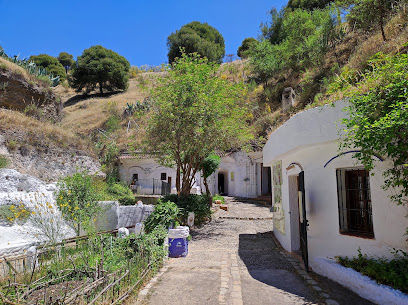
Mirador de la Vereda de Enmedio
Experience breathtaking views of the Alhambra and the beauty of Granada from the picturesque Mirador de la Vereda de Enmedio.
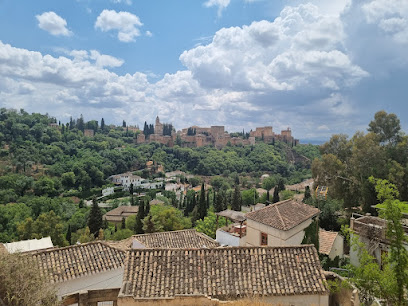
Patio de Los Leones
Discover the breathtaking Patio de Los Leones, a gem of Moorish architecture in Granada, rich in history and beauty.

Cuevas de Sacromonte
Explore the historic Cuevas de Sacromonte in Granada, a unique glimpse into traditional cave dwellings and vibrant flamenco culture.

Patio de los Arrayanes
Discover the breathtaking beauty of Patio de los Arrayanes, a hidden gem within the Alhambra, reflecting rich Moorish heritage in Granada.

Aljibe rain
Explore Aljibe Rain in Granada: A Historical Landmark Showcasing Moorish Engineering and Rich Cultural Heritage.

Museo de La Zambra - Cueva de Curro
Explore the heart of Flamenco at Museo de La Zambra - Cueva de Curro, an enchanting cave museum in Granada's historic Albaicín district.

Essential places to dine
Restaurante Casa Torcuato
Experience authentic Andalusian cuisine at Restaurante Casa Torcuato in Granada's historic Albaicín district.
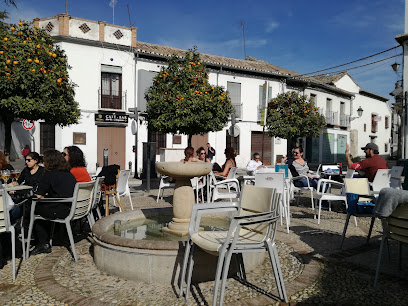
Restaurante Carmen El Agua
Discover authentic Mediterranean and Spanish cuisine at Restaurante Carmen El Agua in Granada's enchanting Albaicín district.

Las Tomasas
Experience authentic Spanish and Mediterranean cuisine with breathtaking views at Las Tomasas in Granada's historic Albaicín district.

Casa Gabriel
Experience authentic Spanish cuisine at Casa Gabriel in Granada's Albaicín; indulge in flavorful tapas amid charming surroundings.

Restaurante Mirador de Morayma
Experience exquisite Mediterranean dining in Granada's Albaicín district with stunning views at Restaurante Mirador de Morayma.

Restaurante Ruta del Azafrán Granada
Discover Mediterranean culinary excellence at Restaurante Ruta del Azafrán in Granada's enchanting Albaicín district.

La Chumbera
Experience authentic Mediterranean cuisine at La Chumbera in Granada's historic Albaicín district with breathtaking views.

El Mirador de Tato
Experience exquisite Spanish cuisine with breathtaking views at El Mirador de Tato in Granada.

Rincón del Chapiz
Discover Rincón del Chapiz in Granada - where traditional flavors meet vegetarian delights in a cozy setting.

Casa Juanillo
Experience authentic Andalusian flavors at Casa Juanillo in Granada's historic Albaicín district, where tradition meets culinary excellence.
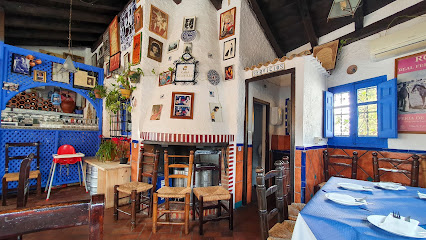
Markets, malls and hidden boutiques
La Alborea Souvenirs Granada
Discover authentic Andalusian crafts and unique souvenirs at La Alborea Souvenirs in Granada's vibrant city center.
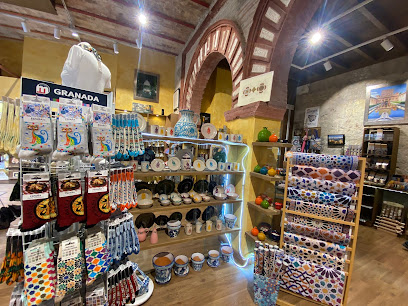
Zocoalhambra
Discover the essence of Granada at Zocoalhambra, a treasure trove of artisanal crafts, aromatherapy, and unique gifts in the heart of Albaicín.

Medina crafts, S.L. (Catholic kings)
Explore Medina Crafts in Granada for unique, handcrafted souvenirs that embody the rich culture and artistry of the region.

CARAVANSAR
Explore CARAVANSAR in Granada for unique souvenirs, stunning jewelry, and the finest local artistry in a charming atmosphere.

Bel Boton Boutique
Explore the charm of Granada at Bel Boton Boutique, where unique gifts and local artistry come together to create the perfect memento.

Artesanías Medina Abanicos
Explore the charm of Granada with unique handcrafted souvenirs at Artesanías Medina Abanicos, your go-to gift shop for authentic local treasures.

Sueños de Agua
Discover the essence of Granada at Sueños de Agua, where local artistry meets breathtaking views in the heart of the Albaicín district.

Official Alhambra Giftshop
Explore the Official Alhambra Giftshop for unique Andalusian souvenirs, artisanal crafts, and gifts to remember your visit to Granada's iconic landmark.

Shops
Discover the unique shops of Albaicín, where traditional craftsmanship meets modern flair in the heart of Granada.

La trastienda del barrio
Explore La Trastienda del Barrio in Granada for unique clothing and accessories that reflect the vibrant culture of this historic city.

Essential bars & hidden hideouts
Huerto del Loro
Discover the lively ambiance of Huerto del Loro, a premier pub and concert hall in Granada, offering unforgettable nights filled with music and scenic views.

El Pozo
Discover the flavors of Granada at El Pozo, a charming tapas bar in the historic Albaicín district, offering delicious dishes and a vibrant atmosphere.

Rincón del Chapiz
Discover the flavors of Granada at Rincón del Chapiz, a charming bar and vegetarian restaurant in the heart of Sacromonte.

Café Bar Bocadilleria Pibe
Explore the flavors of Granada at Café Bar Bocadilleria Pibe, a cozy spot for authentic tapas and local delights in the heart of Albaicín.

Los Faroles
Experience the charm of Granada at Los Faroles, a cozy bar in Albaicín with stunning views and authentic Andalusian tapas.

Mirador Bar Gitano
Experience breathtaking views and local flavors at Mirador Bar Gitano in the heart of Albaicín, Granada's historic district.

Drinks & Sun
Discover the vibrant ambiance of Drinks & Sun in Granada's Albaicín district, where refreshing drinks and stunning views await your visit.

Bar Meridional
Discover the essence of Granada at Bar Meridional, a cozy bar in Albaicín offering delightful tapas and local wines.

Cueva La Zingara
Experience authentic flamenco and traditional tapas in the atmospheric Cueva La Zingara, a hidden bar in Granada's historic Albaicín district.

Flamenco Bar
Discover the heart of Flamenco culture in Granada at Flamenco Bar, where tradition meets vibrant performances in a historic setting.

Local Phrases
-
- HelloHola
[oh-lah] - GoodbyeAdiós
[ah-dee-ohs] - YesSí
[see] - NoNo
[noh] - Please/You're welcomePor favor
[por fah-vor] - Thank youGracias
[grah-see-ahs] - Excuse me/SorryPerdón
[pair-dohn] - How are you?¿Cómo estás?
[koh-moh es-tahs] - Fine. And you?Bien. ¿Y tú?
[byen. ee too] - Do you speak English?¿Hablas inglés?
[ah-blahs een-glays] - I don't understandNo entiendo
[noh en-tee-ehn-doh]
- HelloHola
-
- I'd like to see the menu, pleaseMe gustaría ver el menú, por favor
[may goos-tah-ree-ah bair el meh-noo, por fah-vor] - I don't eat meatNo como carne
[noh koh-moh kahr-neh] - Cheers!¡Salud!
[sah-loohd] - I would like to pay, pleaseQuisiera pagar, por favor
[kee-see-air-ah pah-gar, por fah-vor]
- I'd like to see the menu, pleaseMe gustaría ver el menú, por favor
-
- Help!¡Ayuda!
[ah-yoo-dah] - Go away!¡Vete!
[veh-teh] - Call the Police!¡Llama a la Policía!
[yah-mah ah lah poh-lee-see-ah] - Call a doctor!¡Llama a un médico!
[yah-mah ah oon meh-dee-koh] - I'm lostEstoy perdido/a
[es-toy pair-dee-doh/dah] - I'm illEstoy enfermo/a
[es-toy en-fer-moh/dah]
- Help!¡Ayuda!
-
- I'd like to buy...Me gustaría comprar...
[may goos-tah-ree-ah kohm-prar] - I'm just lookingSolo estoy mirando
[soh-loh es-toy mee-rahn-doh] - How much is it?¿Cuánto cuesta?
[kwan-toh kway-stah] - That's too expensiveEso es demasiado caro
[eh-soh es deh-mah-see-ah-doh kah-roh] - Can you lower the price?¿Puedes bajar el precio?
[pway-dehs bah-har el pree-syoh]
- I'd like to buy...Me gustaría comprar...
-
- What time is it?¿Qué hora es?
[kay oh-rah es] - It's one o'clockEs la una
[es lah oo-nah] - Half past (10)Y media (10)
[ee meh-dee-ah (dheez)] - MorningMañana
[mah-nyah-nah] - AfternoonTarde
[tahr-deh] - EveningNoche
[noh-cheh] - YesterdayAyer
[ah-yair] - TodayHoy
[oy] - TomorrowMañana
[mah-nyah-nah] - 1Uno
[oo-noh] - 2Dos
[dohs] - 3Tres
[trays] - 4Cuatro
[kwah-troh] - 5Cinco
[theen-koh] - 6Seis
[says] - 7Siete
[syay-teh] - 8Ocho
[oh-choh] - 9Nueve
[nweh-veh] - 10Diez
[dyeth]
- What time is it?¿Qué hora es?
-
- Where's a/the...?¿Dónde está...?
[dohn-deh es-tah] - What's the address?¿Cuál es la dirección?
[kwal es lah dee-rek-syon] - Can you show me (on the map)?¿Puedes enseñarme (en el mapa)?
[pway-dehs en-sen-yar-meh (en el mah-pah)] - When's the next (bus)?¿Cuándo es el próximo (autobús)?
[kwan-doh es el proh-ksee-moh (ow-toh-boos)] - A ticket (to ....)Un billete (para ...)
[oon bee-yet-teh (pah-rah)]
- Where's a/the...?¿Dónde está...?
History of Sacromonte
-
Sacromonte, meaning 'sacred mountain', has its roots in the 16th century when it became a refuge for the Romani people fleeing persecution. The neighborhood is famous for its cave dwellings, known as 'cueva', which were carved into the hillsides of the Sierra Nevada. The unique architecture reflects the adaptation of its inhabitants to the mountainous terrain, allowing them to create homes that were cool in summer and warm in winter.
-
In the early 17th century, the construction of the Abbey of Sacromonte, a religious complex dedicated to Saint Cecilio, further established the area as a center of pilgrimage and spirituality. This complex housed remains believed to be of Saint Cecilio, the patron saint of Granada, and became a significant site for the Catholic Church amidst the religious tensions of the time.
-
The 19th century saw Sacromonte emerging as a hub for flamenco music and dance. The fusion of Romani, Moorish, and Andalusian influences shaped the vibrant cultural expression that can still be witnessed today. The cave venues, known as 'tablaos', became popular spots for authentic flamenco performances, attracting both locals and tourists.
-
During the Spanish Civil War (1936-1939), Sacromonte was not spared from the turmoil. The neighborhood experienced a significant decline due to the conflict, with many residents fleeing or facing hardships. However, the post-war period saw a revival of cultural activities, and the neighborhood began to regain its status as a center for flamenco and traditional Andalusian culture.
-
In contemporary times, Sacromonte has evolved into a popular tourist destination while maintaining its cultural heritage. The neighborhood hosts various cultural festivals and events, celebrating its flamenco roots and the unique lifestyle of its residents. Additionally, the area is known for its stunning views of the Alhambra and the city of Granada, making it a picturesque spot for visitors.
Sacromonte Essentials
-
Sacromonte is easily accessible from Granada's city center. You can take a short walk from the Alhambra or catch a local bus (lines 31 and C3) from the city center. If you're coming from the train or bus station, a taxi is a convenient option, taking approximately 10 minutes. Alternatively, you can walk through the scenic paths of the city, which often leads you through beautiful spots.
-
Sacromonte is best explored on foot, as its narrow streets and steep inclines can be challenging for vehicles. Public buses serve the area, with line 31 being the most useful. Taxis and rideshare services are also available for those who prefer not to walk. Bicycles can be rented in Granada, but be cautious of the hilly terrain.
-
Sacromonte is generally safe for tourists, but like any tourist area, it's wise to remain vigilant. Petty crimes, such as pickpocketing, can occur, especially in crowded areas or during performances. Avoid wandering alone at night in poorly lit areas of Sacromonte. It's recommended to stay in well-populated regions, particularly around the popular attractions.
-
In emergencies, dial 112 for police, fire, or medical assistance. The nearest hospital is Hospital Universitario Virgen de las Nieves, located a short taxi ride away. Make sure to have travel insurance that covers emergencies, and keep a list of important contacts with you. Pharmacies are available throughout the neighborhood for minor health issues.
-
Fashion: Do wear comfortable shoes suitable for walking on uneven terrain. Don't wear overly revealing clothing, as Sacromonte has a local culture that values modesty. Religion: Do respect local customs, particularly when visiting churches or during flamenco shows. Public Transport: Do be courteous to fellow passengers. Don't engage in loud conversations on public transport. Greetings: Do greet with a friendly 'Hola' and a smile. Eating & Drinking: Do try local dishes like 'tortilla del Sacromonte.' Don't waste food, as it is considered disrespectful.
-
To experience Sacromonte like a local, attend a flamenco show in one of the caves, where you can enjoy authentic performances. Visit the local viewpoints for stunning views of the Alhambra and the Sierra Nevada mountains, especially at sunset. Engage with the locals, who are often welcoming and eager to share insights about their culture and heritage. Try to explore during weekdays to avoid the crowds and enjoy a quieter atmosphere.
Trending Landmarks in Sacromonte
Nearby Cities to Sacromonte
-
Things To Do in Almeria
-
Things To Do in Ronda
-
Things To Do in Catalan Bay
-
Things To Do in Moorish Castle
-
Things To Do in Casemates Square
-
Things To Do in Gibraltar
-
Things To Do in Main Street
-
Things To Do in St. Michael's Cave
-
Things To Do in Alameda Botanic Gardens
-
Things To Do in Queensway Quay Marina
-
Things To Do in Gorham's Cave Complex
-
Things To Do in Europa Point
-
Things To Do in Seville
-
Things To Do in Murcia
-
Things To Do in Tetouan








